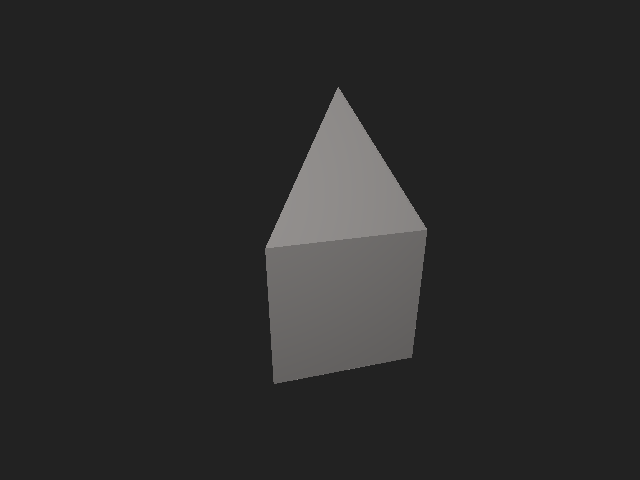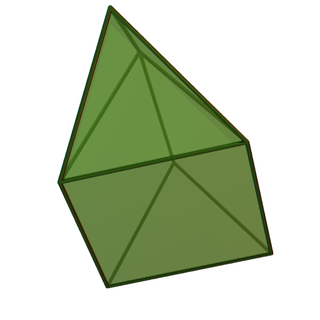Top Qs
Timeline
Chat
Perspective
Elongated triangular pyramid
7th Johnson solid (7 faces) From Wikipedia, the free encyclopedia
Remove ads
In geometry, the elongated triangular pyramid is one of the Johnson solids (J7). As the name suggests, it can be constructed by elongating a tetrahedron by attaching a triangular prism to its base. Like any elongated pyramid, the resulting solid is topologically (but not geometrically) self-dual.

Remove ads
Construction
The elongated triangular pyramid is constructed from a triangular prism by attaching regular tetrahedron onto one of its bases, a process known as elongation.[2] The tetrahedron covers an equilateral triangle, replacing it with three other equilateral triangles, so that the resulting polyhedron has four equilateral triangles and three squares as its faces.[3] A convex polyhedron in which all of the faces are regular polygons is called the Johnson solid, and the elongated triangular pyramid is among them, enumerated as the seventh Johnson solid .[4]
Remove ads
Properties
The height of an elongated triangular pyramid (i.e., the distance between a regular tetrahedron's apex and the center of a triangular base) is the height of a regular tetrahedron and a triangular prism. Its surface area can be calculated by adding the area of all eight equilateral triangles and three squares. Its volume can be calculated by slicing it into a regular tetrahedron and a prism, and then adding their volumes together. With edge length , the formulation for each is:[5][3]
It has the three-dimensional symmetry group, the cyclic group of order 6. Its dihedral angle can be calculated by adding the angle of the tetrahedron and the triangular prism:[6]
- the dihedral angle of a tetrahedron between two adjacent triangular faces is ;
- the dihedral angle of the triangular prism between the square to its bases is , and the dihedral angle between square-to-triangle, on the edge where tetrahedron and triangular prism are attached, is ;
- the dihedral angle of the triangular prism between two adjacent square faces is the internal angle of an equilateral triangle .
Remove ads
References
External links
Wikiwand - on
Seamless Wikipedia browsing. On steroids.
Remove ads













